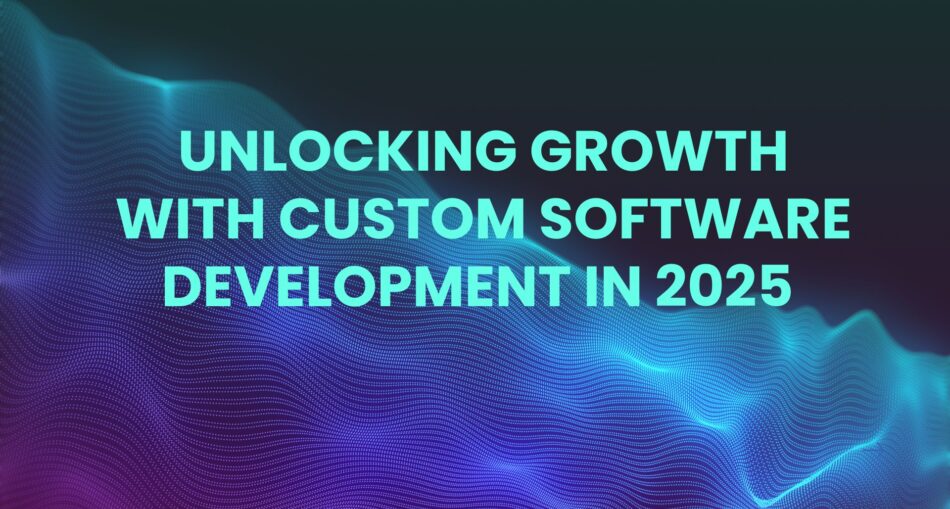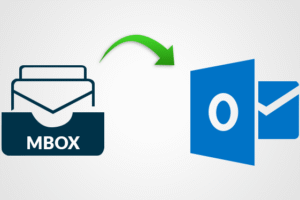In 2025, businesses are navigating an increasingly digital, data-driven world where software isn’t just a tool—it’s a growth engine. The demand for tailored digital solutions has skyrocketed across industries, from healthcare to finance to logistics. According to a recent report by Grand View Research, the global custom software development market is projected to reach $54.26 billion by the end of 2025, growing at a CAGR of 21.9% from 2024. This shift is not a trend—it’s a transformation.
Companies today seek more than just functionality. They demand agility, scalability, enhanced security, and user-centric design. And that’s precisely where custom software development shines. Unlike off-the-shelf solutions that offer one-size-fits-all features, custom software is designed to address specific business needs, aligning perfectly with strategic goals.
This blog explores how custom software development is unlocking growth for modern enterprises in 2025 and highlights the trends, challenges, and industry-specific applications shaping the future.
What is Custom Software Development?
Custom software development refers to the process of designing, building, deploying, and maintaining software solutions that are tailored to the unique needs of a business or organization. Unlike commercial off-the-shelf software (COTS), which serves a broad market segment, custom software is built to address a specific problem or workflow.
Key Benefits of Custom Software Development:
- Tailored Solutions: Built to fit your specific business requirements and processes.
- Scalability: Easily expandable as your business grows.
- Enhanced Integration: Seamless interaction with existing systems and tools.
- Greater Security: Unique architecture means less vulnerability to mass attacks.
- Long-Term Cost Efficiency: Although the upfront cost may be higher, long-term ROI is often better due to efficiency gains and reduced licensing fees.
Key Trends in Custom Software Development for 2025
- AI-Powered Development Artificial intelligence is reshaping how software is built and functions. From intelligent code generation to smart automation, AI is helping companies predict user behavior, personalize services, and boost productivity.
- Low-Code/No-Code Platforms These platforms enable non-technical users to build applications using visual interfaces. In 2025, the adoption of these tools has increased by 35%, helping businesses quickly prototype and iterate custom apps without deep programming knowledge.
- Cloud-Native Applications The shift to cloud-native software continues to accelerate. Businesses are leveraging containerization and microservices to ensure flexibility, reduce downtime, and optimize performance.
- Security-First Development Cyberattacks are at an all-time high. In response, DevSecOps is becoming standard practice. Development teams are integrating security throughout the software lifecycle rather than as a post-launch add-on.
- IoT Integration As IoT devices proliferate across industries, custom software is evolving to manage, analyze, and secure the data generated by these devices. Real-time dashboards, automated alerts, and predictive maintenance are key features in demand.
Industry-Specific Applications
Healthcare
- Telemedicine platforms designed for local regulations and patient needs.
- Custom EHR (Electronic Health Records) with tailored workflows for different specializations.
Finance
- Custom fintech solutions to automate compliance and fraud detection.
- Personalized digital banking experiences using AI and blockchain integration.
Retail & E-commerce
- Tailored inventory management systems that integrate with POS and CRM platforms.
- AI-powered recommendation engines and customer journey optimization.
Logistics & Supply Chain
- Real-time shipment tracking and route optimization software.
- Custom warehouse management systems for inventory forecasting and automation.
Education
- Custom e-learning platforms with gamified experiences and adaptive learning.
- Tools for performance tracking and virtual classroom management.
Challenges in Custom Software Development
- Resource and Cost Constraints While custom solutions offer long-term value, the initial development cost can be significant. It also requires a skilled team of developers, designers, and project managers.
- Time to Market Custom projects can take months to complete. Agile methodologies and MVP (Minimum Viable Product) approaches can help accelerate delivery without compromising quality.
- Maintenance and Support Unlike off-the-shelf software, custom solutions require dedicated support for bug fixes, updates, and enhancements. It’s essential to plan for long-term maintenance.
- Evolving Requirements Businesses evolve, and so do their software needs. Future-proofing the architecture and ensuring scalability from the outset is key to longevity.
Choosing the Right Development Partner
Selecting a reliable software development partner is critical. Look for:
- Industry Expertise: Knowledge of your specific business vertical.
- Technical Proficiency: Experience with the latest development frameworks, security standards, and deployment practices.
- Communication & Collaboration: Agile workflows and clear communication.
- Post-Launch Support: Maintenance, scaling, and regular updates.
Vet potential partners through case studies, testimonials, and pilot projects. Consider companies that are transparent, proactive, and have a robust discovery process.
Conclusion
In 2025, businesses can no longer afford to rely on generic solutions if they wish to remain competitive. Custom software development is not just about building tools—it’s about crafting growth enablers. Whether you’re a healthcare startup aiming to streamline patient experiences or a logistics firm seeking real-time delivery optimization, custom-built software can unlock operational efficiency, improve customer satisfaction, and future-proof your digital assets.
For organizations in emerging tech markets, investing in custom software development is also a strategic move. As companies in rapidly evolving regions like South Africa continue to embrace innovation, leveraging custom software development South Africa services is proving to be a catalyst for digital transformation, local relevance, and global competitiveness.
FAQs
- Why should businesses invest in custom software over off-the-shelf solutions?
Custom software aligns closely with a business’s unique processes, providing better efficiency, integration, and scalability. - Is custom software suitable for small businesses or just enterprises?
Absolutely. With scalable architecture and modular development, even startups and small businesses can benefit from tailored solutions. - How do I calculate the ROI of custom software?
Consider time saved, improved productivity, reduced error rates, and enhanced customer satisfaction. Over time, these benefits outweigh initial development costs. - What is the typical timeline for custom software development?
Timelines vary, but a basic custom application can take 3–6 months. More complex platforms may require 6–12 months or more. - Can custom software integrate with my existing tools?
Yes, one of the main benefits is that it’s built with your current systems in mind, ensuring seamless integration and minimal disruption.





